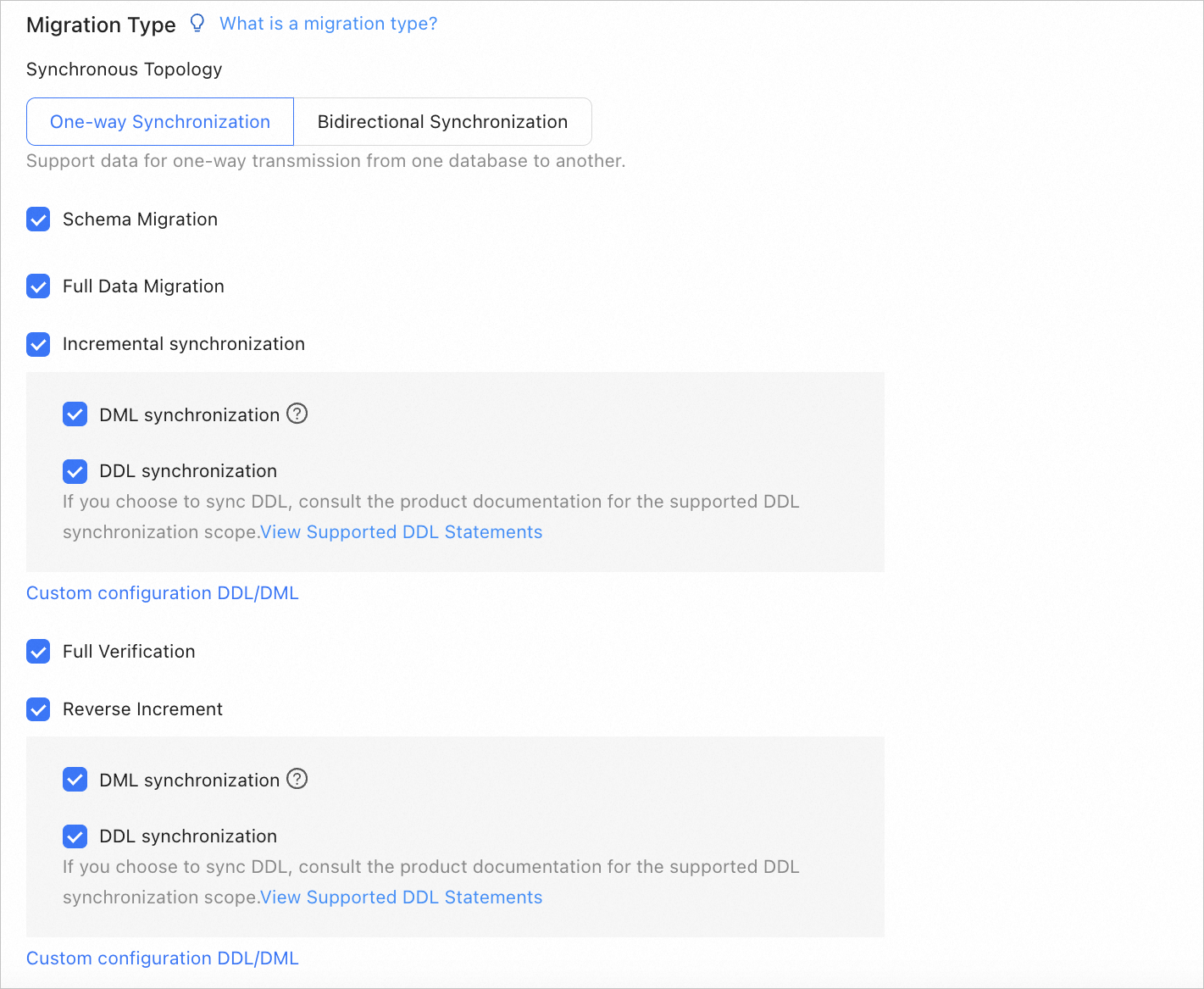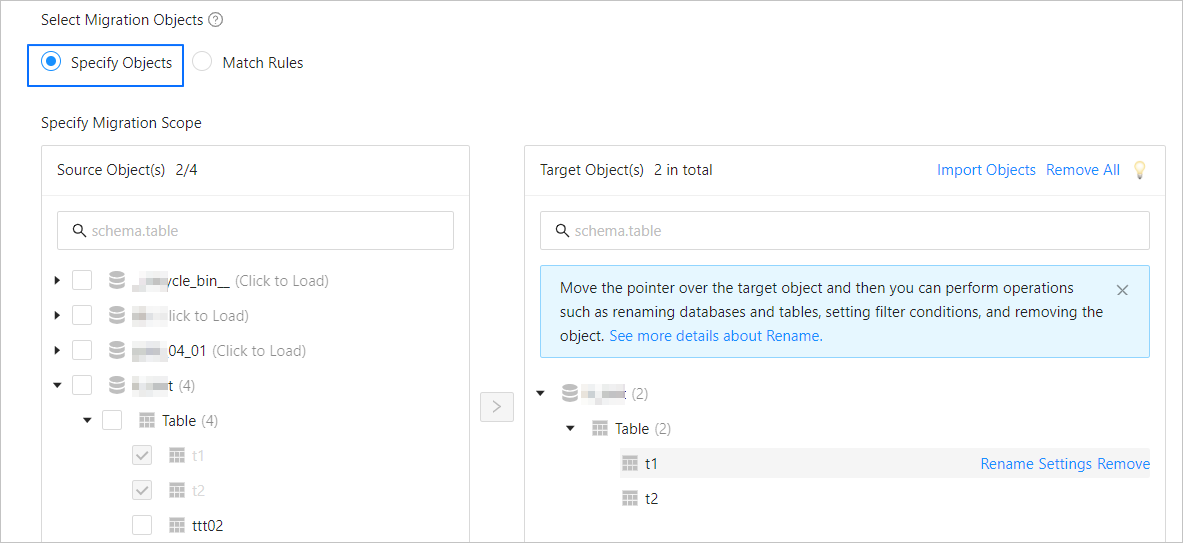Migration type | Description |
Schema migration | After a schema migration task is started, the data transmission service migrates the definitions of database objects (such as tables, indexes, constraints, comments, and views) from the source database to the target database and automatically filters out temporary tables. In a task that migrates schemas from a MySQL database to a MySQL tenant of OceanBase Database, the database that does not exist in the target can be automatically created. |
Full migration | After a full migration task is started, the data transmission service migrates existing data from tables in the source database to corresponding tables in the target database. If you select Full Migration, we recommend that you use the ANALYZE statement to collect the statistics of the MySQL database before data migration. |
Incremental synchronization | After an incremental synchronization task is started, the data transmission service synchronizes changed data (data that is added, modified, or removed) from the source database to corresponding tables in the target database. Options for Incremental synchronization are DML synchronization and DDL synchronization. You can select operations as needed. For more information, see Configure DDL/DML synchronization. Incremental synchronization has the following limitations: If you select DDL Synchronization, when you perform a DDL operation that is not supported by the data transmission service in the source database, the data migration may be interrupted. If the DDL operation is ADD COLUMN, we recommend that you set the column to a NULL column. Otherwise, data migration may be interrupted.
|
Full verification | After the full migration and incremental synchronization tasks are completed, the data transmission service automatically initiates a full verification task to verify the tables in the source and target databases. If you select Full Verification, we recommend that you collect the statistics of the MySQL database and the MySQL tenant of OceanBase Database before full verification. If you selected Incremental Synchronization but did not select all DML operations in the DML Synchronization section, you cannot select Full Verification. The data transmission service supports full verification only for tables with a primary key or non-null unique key.
|
Reverse incremental synchronization | Data changes made in the target database after the business database switchover are synchronized to the source database in real time through reverse incremental synchronization. Generally, incremental synchronization configurations are reused for reverse incremental synchronization. You can also customize the configurations for reverse incremental synchronization as needed. |
 Elastic Compute Service (ECS)
Elastic Compute Service (ECS)
 Container Compute Service (ACS)
Container Compute Service (ACS)

































